In January of 2020, I just finished an exhibition in Beijing, as the Spring Festival approached, I went back to my parents home, after a few days, Covid-19 began to spread. My parent and I did not panic a lot, every day we paid attention to the news, did our best to wear masks, reduced the purchase of daily needs, and carried on our everyday life in the lockdown step by step. Since then, I spent four months in the lockdown with my parents and two cats. It is the most extended period since I left home at 16. We sit around a different table every day, moving from desk to dining-table, making me feel like every day is a cycle of Deja Vu.


The biggest problem for me was that I couldn’t get into the print studio for the first few months; this sudden change disrupted my printing plans. This situation also has dramatically changed how I paint; I began to use the iPad to record these unusual days. I try to use a way to document my daily emotions by using drawing for my diary.

Each day, I will add one arm to record my day’s feelings (the arms and hands’ position represent the day’s mood). I wonder what diary of emotions I will have on the day when Covid-19 ends.
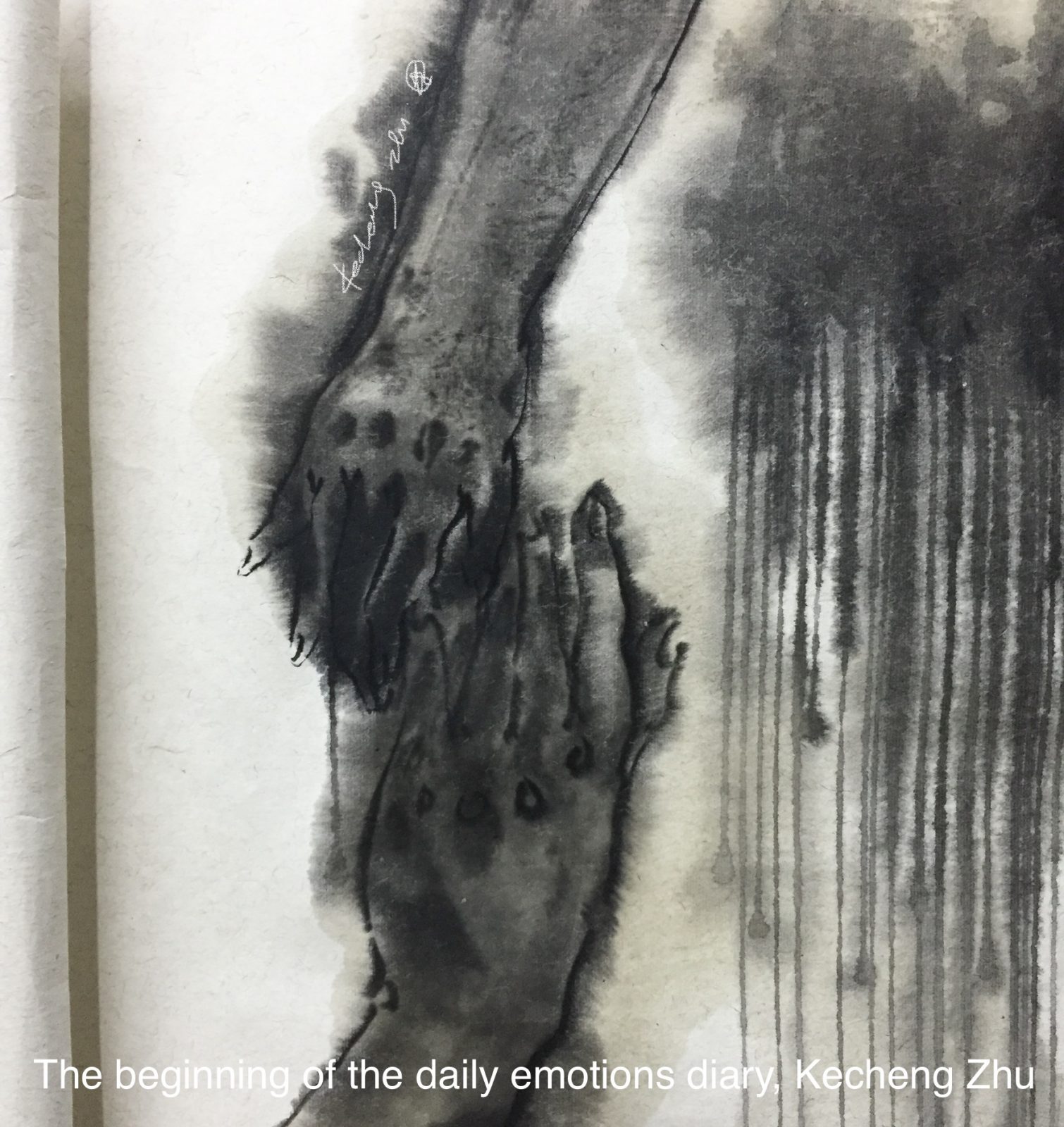
In my daily repeated record of the state simultaneously, my city also ushered in lifting the lockdown around May 2020. Due to everyone’s efforts, my city is not troubled by Covid-19, but such actions also need our persistence. It’s been a year since the start of the 2020’s epidemic and will usher in the Spring Festival of 2021. I write this paragraph, and this diary work is still going on. I believe that all these things happened during this period will potentially influence my creation.
Words by Kecheng Zhu on 01/02/2021
Words by Zhu Kecheng
Translated by Aimin Liu
From October 2019, I was fortunate to have participated in a talent training program for major themes by water-based woodcut artists, which was organised by the National Art Foundation, and led by Professor Chen Qi of the Central Academy of Fine Arts. I was the youngest person on the program, and I successfully set foot in the field of creation of major themes under the leadership of a group of academic and professional teachers, artists, and students. We were a group of 15 people engaged in art education, or freelance artists who have begun a great creative themes journey of returning to the classroom. Our object of study was the canal between Beijing to Hangzou, which was built during the Shui Dynasty.

On 26 October, we set out on our Yangzhou trip. During the fieldwork sessions on the Yangzhou section of the canal, and through the words of Professor Chen Qi, our guides, commentators and local residents, the impression of the canal I gathered gradually began to reveal itself, little by little, from a hazy vision to reality.

By chance, I watched the entire operation of the Shaobo lock opening and enjoyed a conversation with a real canal boatman. These experience helped me came out of the confusion of the creation of the big theme and found a specific point to explore, which evoked my strong interesting in the creation of great themes.
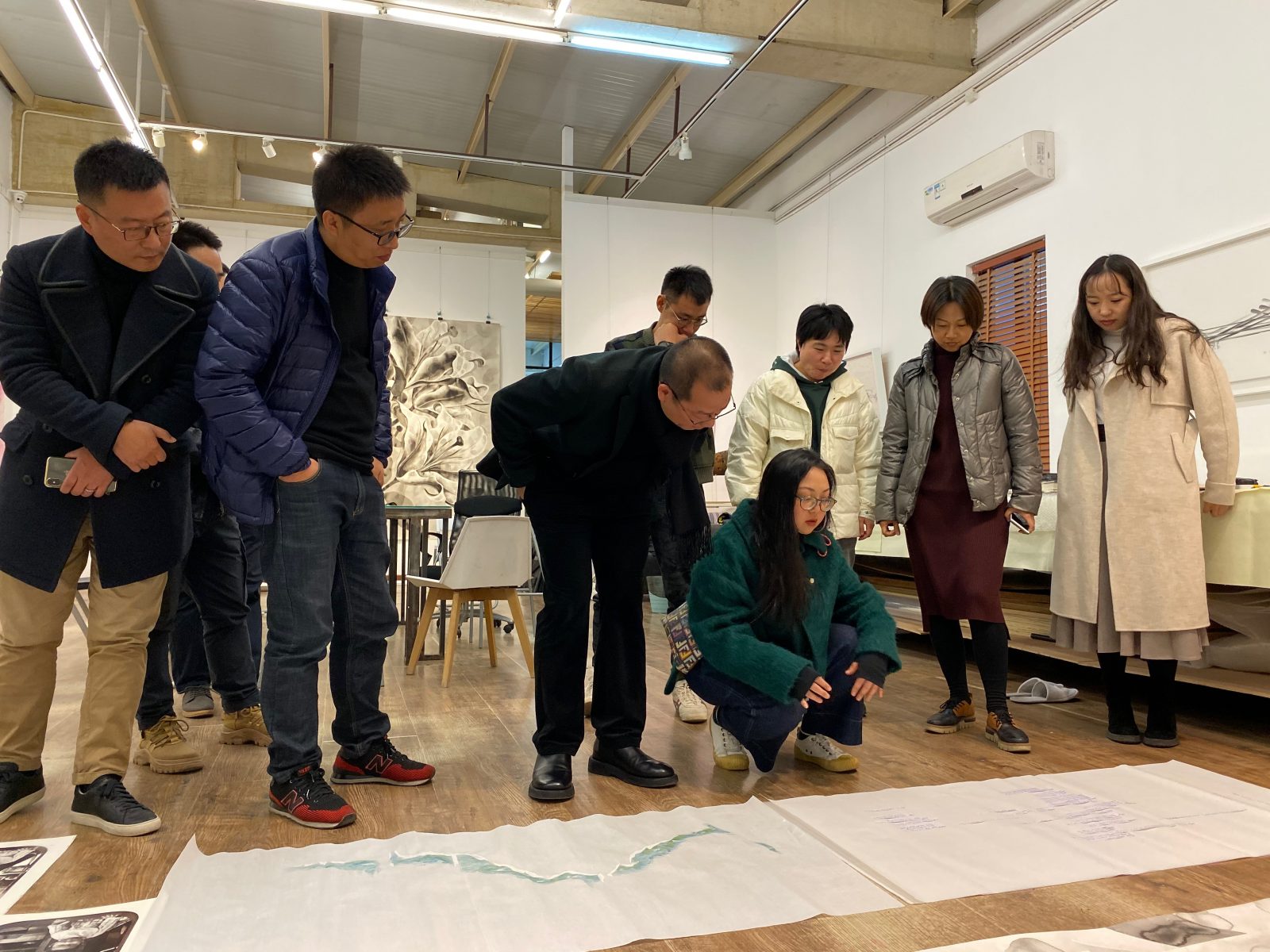
At the gates of the non-stopping locks, there was the captain (also the head of the family). He was struggling to step out, stretch his feet and arms to check the height of a ship so he could tell whether the container was safe or not to pass through the lock. There was an old couple sitting on a small wooden boat fishing on the canal. There was a little boy in a yellow puffer life jacket, with a running nose. There was a white dog with a wagging tail running around the deck of a ship. The alley vendor sold snacks called “Da Da Zi” and he asked me heartily if it was delicious. At Yucheng Station, a group of young workers carefully measured on the Drum Tower and discussed whether to repair it next year. Elders played chess in a circle around Gudaogou Lane…
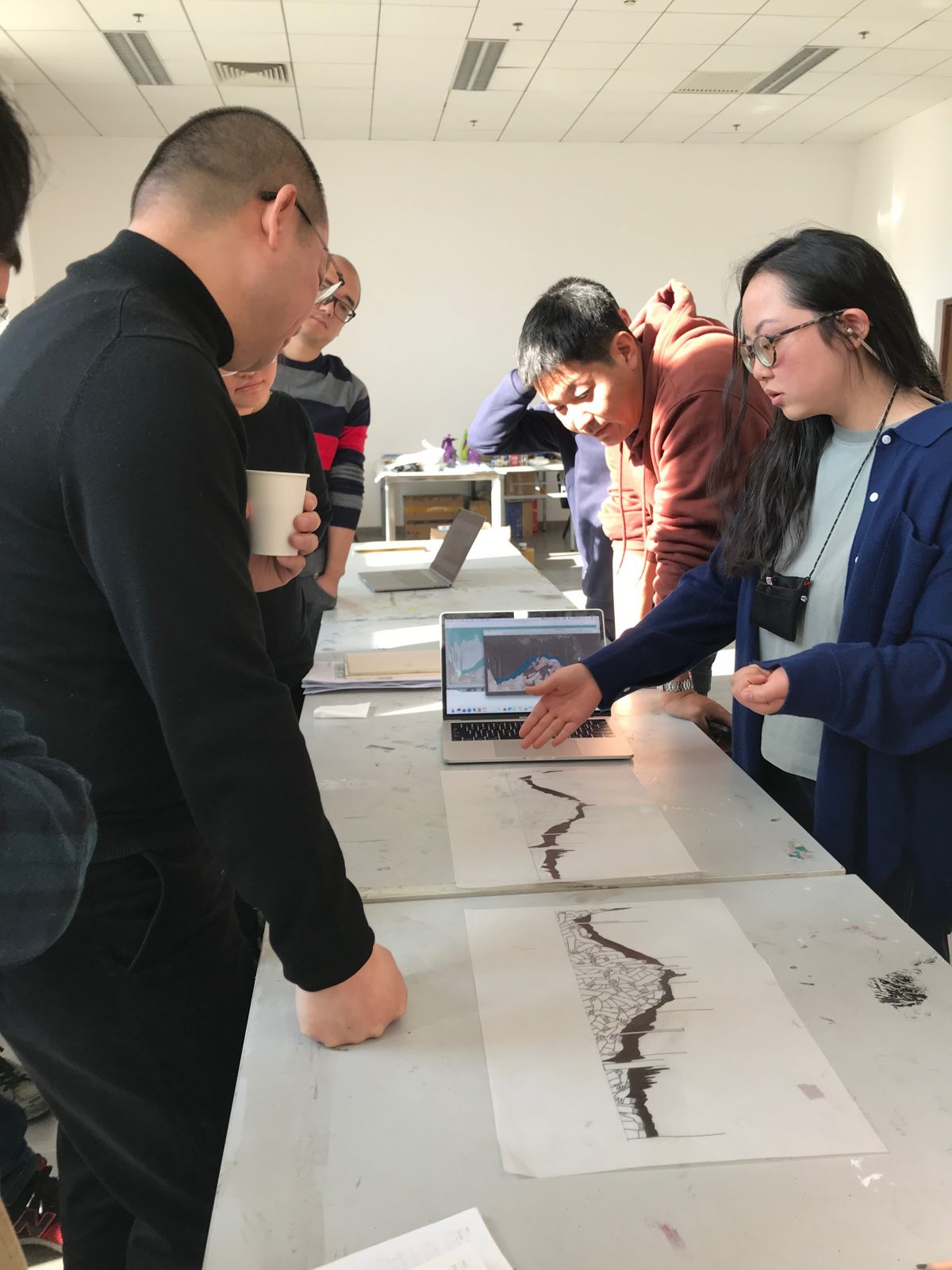
During our 9-day journey, these experience made me want to explore the canal. The Grand Canal has gradually formed in my mind ⼀ a long dragon with water as the carrier. The sparking surface of the water bears more than just the political economy created by cargo ships. Value, instead, bears the name of each person who is dedicated to the construction, navigation, transportation, wisdom, and sweat that goes into its running and maintenance.

I added an element of “readability” to the sketch, and there is specific text on an abstract river. I hope that this can create new visual conclusions. After undergoing three transformations of the work, although there are still many details to be considered, they are finally getting closer to the visual I want to portray.
To purchase prints by Zhu Kecheng, please visit our online shop.
This post was written by Chinese artist Zhu Kecheng, about painting with her father Zhu Jianhui, about his influence on her as an artist, and a recent experimental painting project they completed together, with the works below titled simply “Watercolour”.

When I was a child, I liked to paint the sky, the ground, the sheets, and cut my trousers like Yayoi Kusama’s wave point. My dad said I couldn’t help it; I had inherited his artistic DNA.
When I first saw the prints in my father’s studio, I was intrigued. I wondered what fun it could be, curious about the weird tools–mushroom-like tools of all sizes, road roller-like tools, a piece of white paper on a board, rolled out of the ground like a road roller machine with pictures on it. This experience and curiosity established my first Enlightenment about printmaking. When I developed a great interest in art, my father thought it should develop with my nature. So, I started my daily graffiti practice.
Then I uncontrollably fell in love with prints and printmaking, an interest of which my parents were very supportive. We would often have fierce debates about different artistic concepts, but could also quietly share the same space for creation. My mother often jokes that my father and I are not actually father and daughter, but friends.
We recently cooperated on a painting experiment. We created art together on the same blank page. I would draw the first stroke and he would draw the second stroke. So we took turns to see what would happen.
After an afternoon’s play, our brushes sometimes fighting and sometimes merging, these are the results. What do you think?
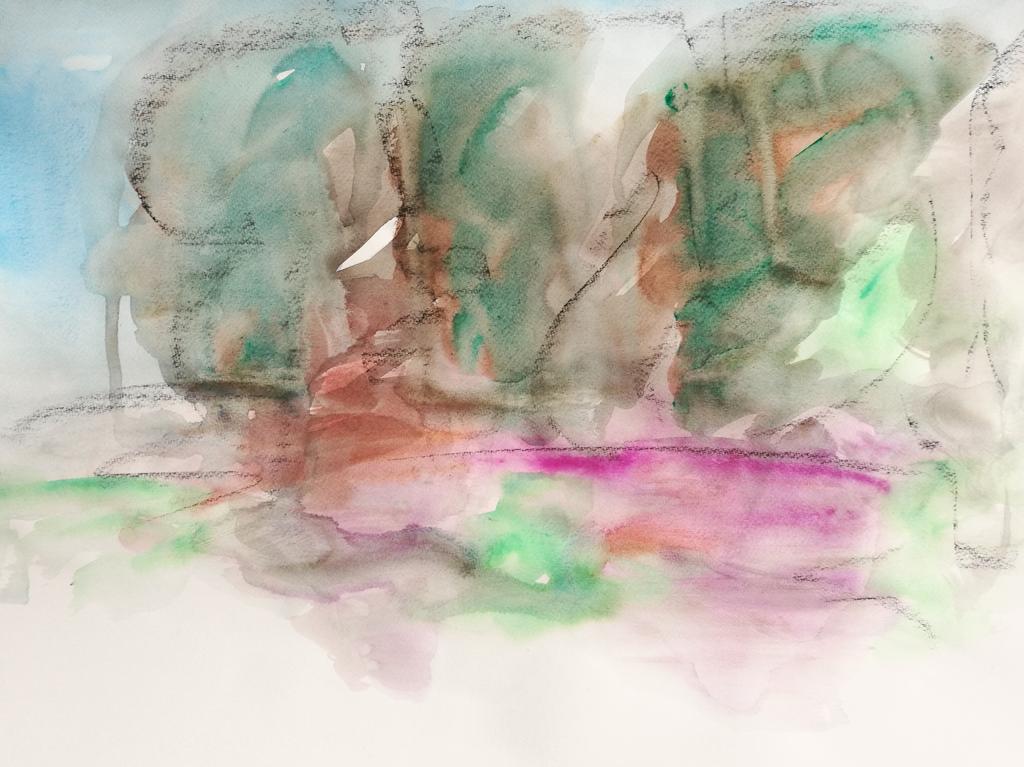
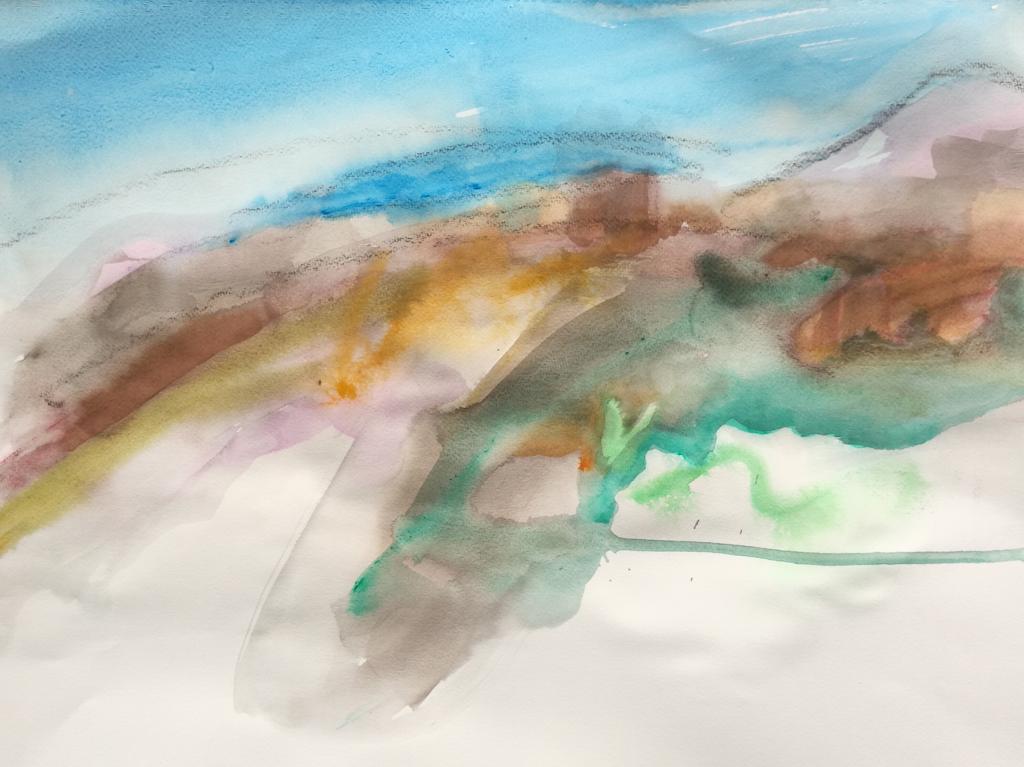

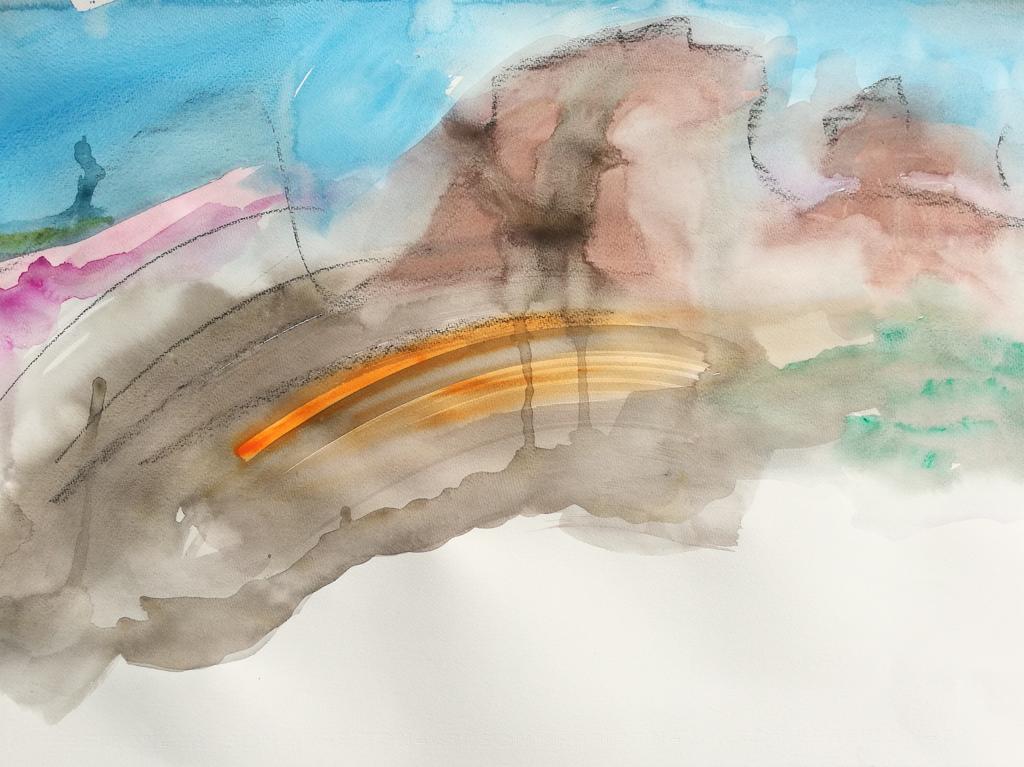
We have prints for sale from both Zhu Kecheng and Zhu Jianhui. Click their names to see examples and contact us for more information!















